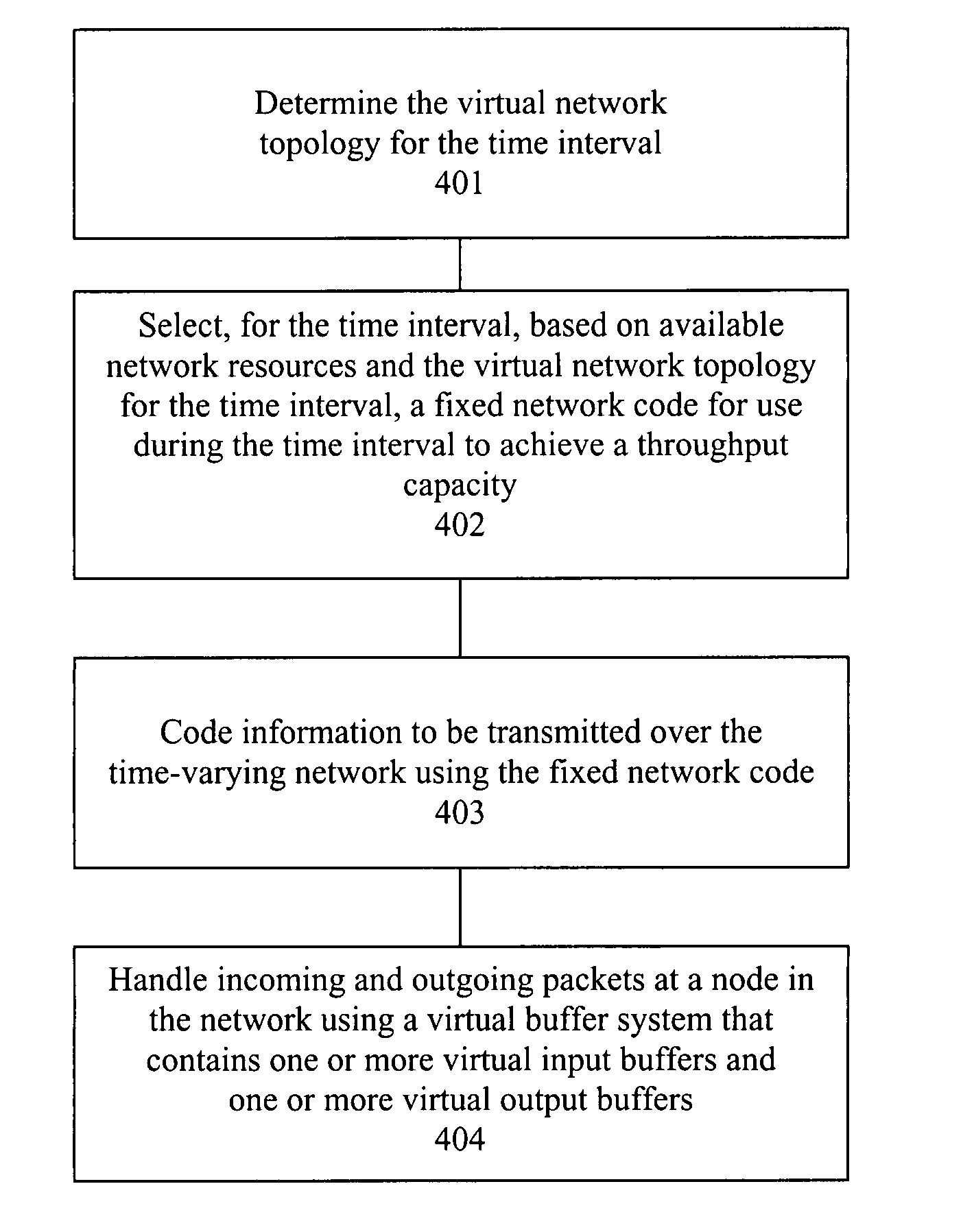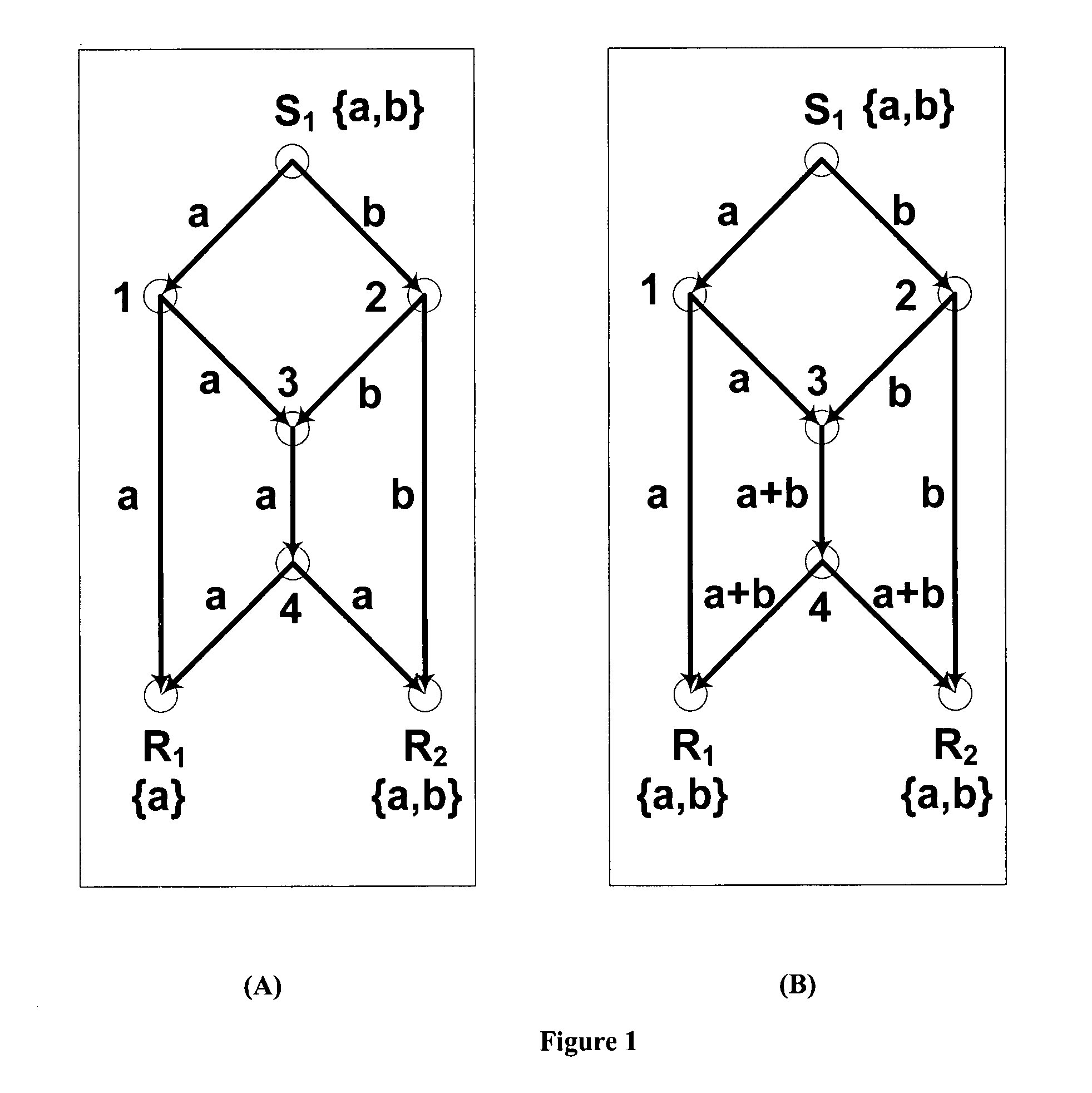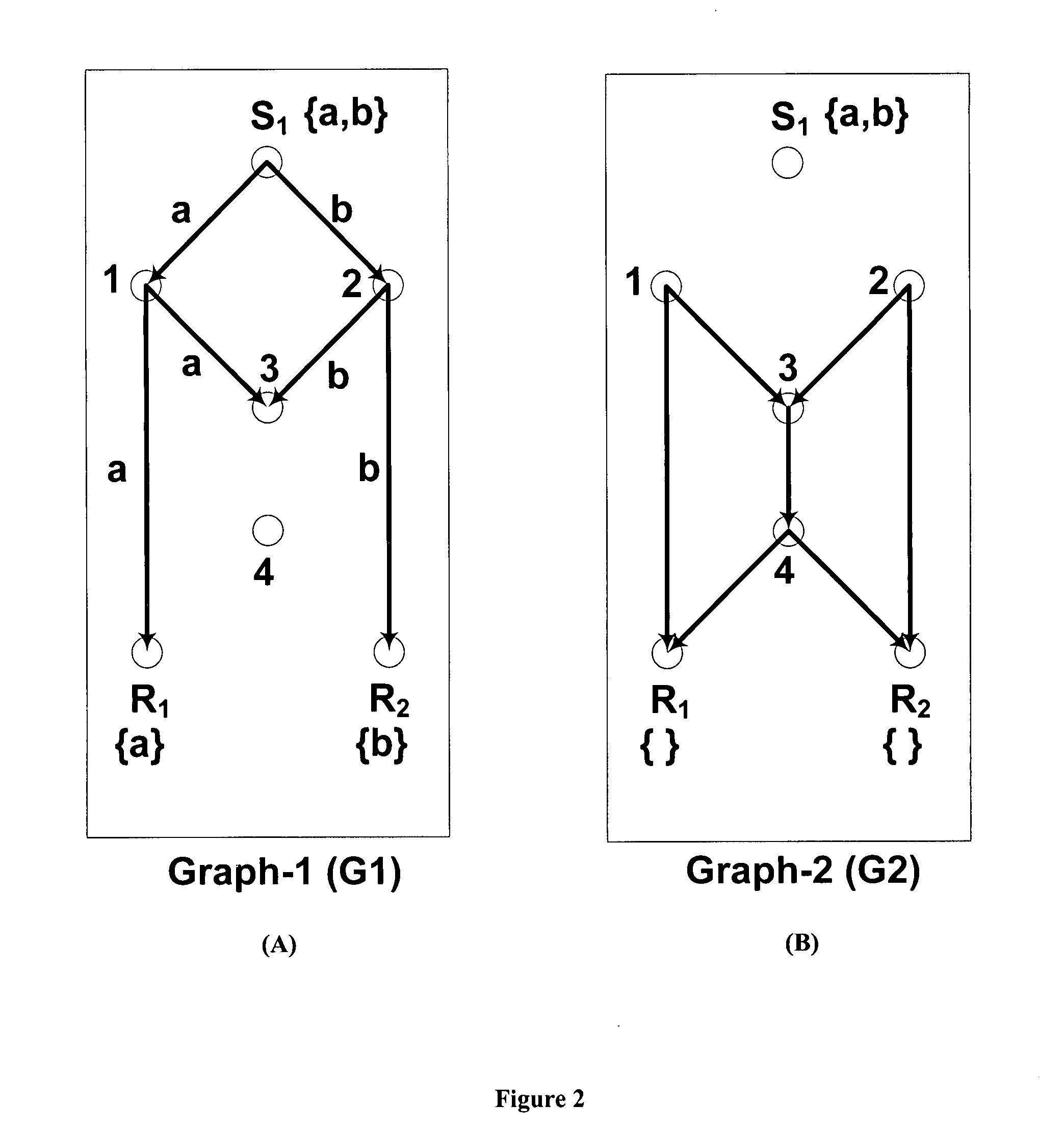Information delivery over time-varying network topologies
- Summary
- Abstract
- Description
- Claims
- Application Information
AI Technical Summary
Problems solved by technology
Method used
Image
Examples
Embodiment Construction
[0025]Methods and apparatuses for performing network coding over network topologies that change with time are disclosed. One embodiment of the invention provides a systematic way of increasing, and potentially maximizing, the amount of information delivered between multiple information sources (e.g., senders) and multiple information sinks (e.g., receivers) over an arbitrary network of communication entities (e.g., relays, routers, etc.), where the network is subject to changes (e.g., in connectivity and connection speeds) over the time of information delivery. Embodiments of the present invention differ from approaches mentioned in the background that look at static networks (fixed connectivity and connection speed), providing higher throughput than such prior art in which codes are designed to be robust over a sequence of topologies. Embodiments of the present invention are different from the approach of using random network codes.
[0026]Each network node (e.g., each sender, receiv...
PUM
 Login to View More
Login to View More Abstract
Description
Claims
Application Information
 Login to View More
Login to View More - R&D
- Intellectual Property
- Life Sciences
- Materials
- Tech Scout
- Unparalleled Data Quality
- Higher Quality Content
- 60% Fewer Hallucinations
Browse by: Latest US Patents, China's latest patents, Technical Efficacy Thesaurus, Application Domain, Technology Topic, Popular Technical Reports.
© 2025 PatSnap. All rights reserved.Legal|Privacy policy|Modern Slavery Act Transparency Statement|Sitemap|About US| Contact US: help@patsnap.com



